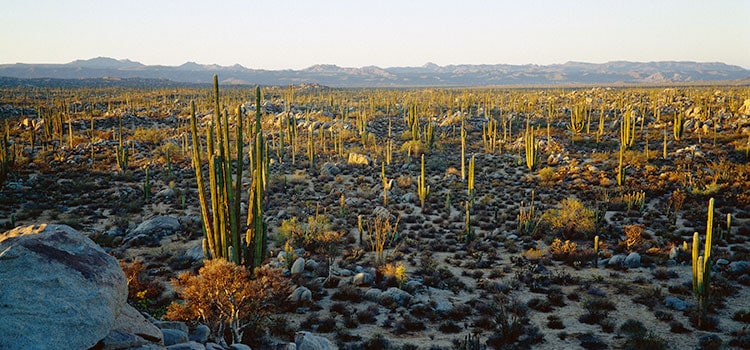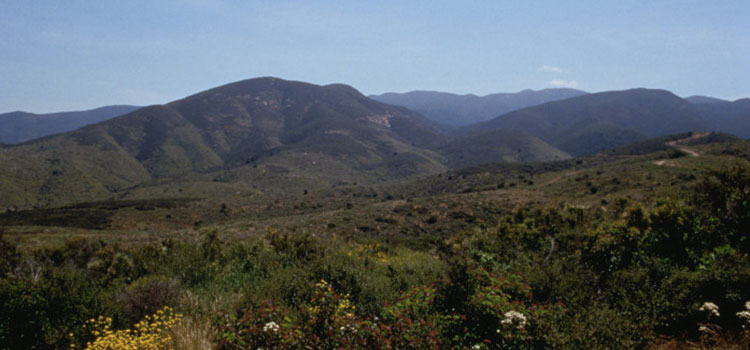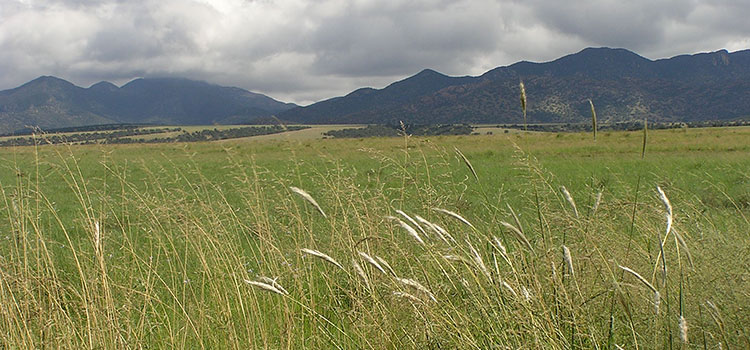Where We Work
SJV Boundaries
The SJV includes southern Arizona, southern California, and the Mexican states of Sonora, Sinaloa, Baja California, Baja California Sur, western Chihuahua, western Durango, and northern Nayarit, as well as the Gulf of California and its islands. The boundaries were jointly determined by partners in the U.S. and Mexico.
Description of the Area
Elevation in the SJV ranges from below sea level at the Salton Sea (-300′) to approximately 9,000′ in the mountains. The climate is largely desertic with extremely low rainfall occurring in late summer, high intensity storms or low intensity winter storms. The topography and climate produce a diversity of habitats, including desert and coastal shrublands, riparian, Madrean pine-oak, pine, mixed conifer, chaparral, pinyon-juniper woodlands, desert grasslands, tropical deciduous forests, desert thorn-scrub, coastal dunes, mangroves, estuarine, freshwater, brackish, and saltwater wetlands, and coastal lagoons.
The birdlife of the SJV region is diverse, with 744 bird species breeding in, wintering in, and/or migrating through the area. This is nearly two-thirds of all bird species that occur in northern Mexico, the United States, and Canada. There are seventeen endemic or near endemic species. Additionally, there are several endemic subspecies. Over 50% of the world’s population of about twenty additional species also occurs here.
The SJV is not only biologically diverse, but culturally, as well, and the SJV is committed to recognizing and complementing the cultural diversity found in our region. Along with the Hispanic and Anglo cultures, the area is home to more than twenty indigenous cultures. Working binationally and in an area of great cultural diversity presents both unique challenges and opportunities. The SJV strives to be a model for future conservation partnerships in areas of human diversity.
Land use in the SJV area is varied and long-standing. Humans have been using the area for approximately 10,000 years. Species composition and habitat structure has undergone large-scale changes due to grazing and mining impacts from the late 1800s to the early 1900s. Since the early 1900s significant effects have come from urbanization, recreation, and military activities. Specific impacts include loss of habitat to urban and agricultural development, ground water pumping, surface-water diversion, overgrazing, invasive non-native plants, aquaculture, and increasing recreational pressures.
Habitats of the Sonoran Joint Venture
The SJV covers in whole or part ten Bird Conservation Regions (BCR) identified by the North American Bird Conservation Initiative Committee (NABCI). Elevation in the SJV ranges from below sea level at the Salton Sea (-300′), to sea level coast line and islands, to relatively flat desert areas, to high plateaus and mountain ranges (9,900′). The climate is largely desertic with extremely low rainfall occurring in late summer, high intensity storms or low intensity, winter storms. The topography and climate produce a diversity of habitats including: desert shrublands, riparian, Madrean pine-oak, pine, mixed conifer, fir, chaparral, pinyon-juniper woodlands, desert grasslands, rock outcrops, tropical deciduous forest, desert thorn-scrub, palm groves, semi-deciduous forest, freshwater wetlands, coastal dunes, coastal shrublands, mangroves, estuarine, brackish and salt water wetlands, coastal lagoons, rocky islands, and halophytic brushlands. Of these, the desert shrublands and grasslands, Madrean pine-oak, and various coastal environments are the most unique biotas.
Birds rely on a myriad of habitats in the Sonoran Joint Venture region. In order to adequately address the conservation needs of such a broad area, we have carefully created a conservation prioritization process for each species and select priority habitats each year. Of the approximately 750 species of birds in the SJV region, 667 occur regularly. The SJV Bird Conservation Plan includes an avifaunal analysis that assesses the status and prioritizes all bird species found within the region. At a continental level, 155 species are considered Concern Species that merit conservation attention. In addition, there are 152 Regional Concern Species.


 English
English  Español
Español 


